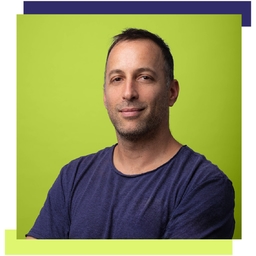
AI and the Retail Marketer’s Future
How AI transforms strategy and processes, driving the adoption of Positionless Marketing
Exclusive Forrester Report on AI in Marketing

It has been about 15 years since what is considered the biggest financial catastrophe since the big depression of the 1930’s. The crisis in the subprime mortgage market in the US shocked the entire global financial environment. Top financial houses, like investment firm Lehman Brothers or UK bank Northern Rock, collapsed. And the shockwaves, almost a decade after, are still being felt in the banking sector - customer confidence in banks and bankers is still shaken from the effects of the crisis.
Moreover, a poll released from the University of Chicago found that only 10 percent of respondents have a “great deal” of confidence in banking/ financial institutions. That’s down from 22 percent in 2020. In response, as of 2022, 78% of adults in the U.S. prefer to bank via a mobile app or website, and only 29% of Americans prefer to bank in person.
Armed with this information, traditional banks need to find , before they are lapped up by new, online challengers.
In the past, consumers tended to stick to a bank or even a specific branch, even if they were dissatisfied. This inertia in the industry left room for banks to not prioritize close customer relationships. But this is quickly changing.
The idea of changing banks has been common according to a poll conducted by CivicScience in January 2023 — about one-quarter of U.S. adults are ‘somewhat likely’ to switch banks in the next three months (22%), with 6% making up those ‘very likely’ to switch.
New digital banks – offering tailored services such as retail discounts and financial advice to help customers save –found a new generation of brand-agnostic customers happy to switch providers if necessary. The emergence of these new, agile alternatives means that older banks are now having to compete on a more open field. And after many years of failing to invest their attention into marketing and maintaining customer relationships, it’s not going to be an easy task.
The competition has now worsened with specific open banking regulations. The Open Banking Initiative and the second Payment Services Directive (PSD2), from January 2018, has forced banks to share customer account data with third parties (with the customer’s consent) and open up the back end of their programs to other external developers. Customers can compare the value that each financial services company offers, without having to shop around. It also means that third parties can carry out money transfers without having to go through the bank, so electronically moving currency around is even easier. In simpler terms, competition is democratized and has been made extremely fluid.
Traditional banks have to respond to this consumer-focused market and develop successful marketing strategies to make sure they do not lose even more customers. The main advantage that online banking providers offer is a tailored, personalized approach. No longer able to rely on quality or brand loyalty to retain customers, old-school banks need to offer real value in a personalized way that appeals to each customer as an individual.
But how can banks tell which offers and strategies are the most effective for each customer? The best way to effectively implement personalization is to make the most of the available customer-data. Marketers can parse the customer base into distinct categories, such as account size or time spent as an account holder using information about their customers. Once a category with key common purchasing and/or demographic traits is identified and isolated, marketers can develop a variety of different, personalized marketing strategies that fit their customers by trying different strategies, such as promotions, personalized offers or reduced charges after temporarily dividing this segment into a few sample groups. Banks can measure the revenue from each strategy through customer transactions, which can inform marketers on the approach for particular types of customers.
AI programs can make smart observations about the results of these trials, isolating not only the most successful strategies, but also the types of customers who respond best to each strategy. Relatively large starting segments can be further narrowed down, at the same time as marketing strategies are perfected.
The way established Financial Services firms respond to marketing and customer engagement is key for survival. Fintech companies have focused on the value they demonstrably add to customers. Traditional players must improve at articulating their proposition to customers – personally, emotionally, and intelligently. With large amounts of customer data available, traditional banks have the resources to do this too. By applying AI and data analytics to their marketing strategies, banks can gain deep insight into what is most useful for clients. They must develop their own personalized services and use this insight to create meaningful relationships with their customers.
Looking for inspiration on how this is done? Download a copy of our use cases for Financial Service firms .
Exclusive Forrester Report on AI in Marketing
In this proprietary Forrester report, learn how global marketers use AI and Positionless Marketing to streamline workflows and increase relevance.


Pini co-founded Optimove in 2012 and has led the company, as its CEO, since its inception. With two decades of experience in analytics-driven customer marketing, business consulting and sales, he is the driving force behind Optimove. His passion for innovative and empowering technologies is what keeps Optimove ahead of the curve. He holds an MSc in Industrial Engineering and Management from Tel Aviv University.


